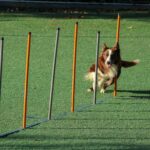|
As we celebrate Black History Month, this is the perfect time to highlight the benefits of bringing forth the ‘Hidden Figures’ of Creativity. Did you know your creativity is affected by observing others? It is a term called ‘fictive learning’ and it takes place in our imagination when we realize what would have happened if we had made a different choice. This type of learning is often linked to feelings of regret (the ‘coulda, woulda, shoulda, line of thinking) but it can also happen when we realize a choice we didn’t make would have been much better. But in this case, we can harness fictive learning for our creative benefit. Since humans are social beings and we learn from watching others, this provides an opportunity to think about other people’s choices and how they used their creative potential in their own lives. This offers a rich source of fictive information about the world that we can use to learn and improve our own decision-making and courageous leaps throughout life. Seeing how someone else’s choice worked for them gives us the information we can tap into later when we have to make our own choices or take creative risks. |

Consider the story of Lonnie G. Johnson, an inventor, and engineer. As a child, he was told not to aspire to be anything great – just take a basic level job and survive. But since he studied the life of George Washington Carver, an inventor and botanist with a global impact though he was born enslaved in 1865, Johnson continued his dream of becoming an inventor.
In his senior year of high school, Johnson won first place for a compressed air powered robot. He helped create significant programs while in the Air Force and began working as an engineer for NASA’s Jet Propulsion Laboratory in 1979. During his time at NASA, Johnson worked on the Galileo mission to Jupiter, the Mars Observer project, and the Cassini mission to Saturn.
Then his creativity took an exponential leap when invented a toy that has stamped my generation with summer water fun, the Super Soaker (which hit $200 million in sales by 1991). The inspiration hit him while he was working on an eco-friendly heat pump. “I accidentally shot a stream of water across a bathroom where I was doing the experiment and thought to myself, ‘This would make a great gun’,” Johnson said. The Super Soaker’s success allowed him to work for himself and fund his own research in green technology.
With his company, Johnson Research & Development, he patented over 100 items that affect our lives every day.
All because of ‘fictive learning’ and taking notice of Carver’s persistence. ‘If he can do it, I can do it too.’
My favorite president, Abraham Lincoln, once said, “I learn from everyone I meet; either what to do or what not to do.”
I didn’t really know much about Carver until my 40’s and I often wonder why we don’t teach about the creative contributions of people of color and women throughout grade schoo
When we hide these hidden figures from ourselves, or even worse, from our children, we are not allowing them to be inspired by ‘fictive learning’ and the creative courage, skill, and accomplishments of others – especially those of color and women.
Let’s remove the cover from the thousands of ‘Hidden Figures’ that could inspire our students’ fictive learning and help them shoot for the stars. People who come from various backgrounds and exemplify the intercultural contributions of this nation cause us to say, “If they can do it. I can do it too.”
This is the true color of intercultural creativity.




